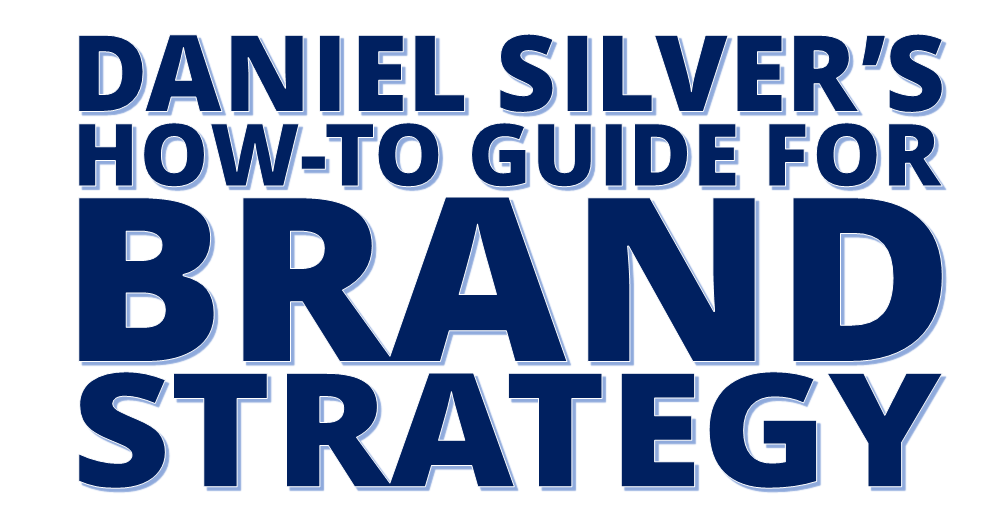 Building a brand is hard.
Building a brand is hard.
It’s not just about redoing your logo. It’s about answering, “what really makes our company special?”
And you have to answer that question in a way that (1) is meaningful to your customers, (2) positions you uniquely in the marketplace, and (3) doesn’t overpromise and underdeliver. (I have a whole article on what makes a good brand. You should look at that first.)
At a small company, defining your brand may be as simple as going through my top 15 brand questions. But at larger companies, it’s a bigger deal, usually involving a lot of people. The process is often emotional and messy.
That’s where an orderly, streamlined branding process comes in. Here’s the process I like:
- Define your audiences
- Figure out your competition
- Survey your audiences
- Brainstorm ideas
- Focus & decide
- Plan & execute delivery
- Measure impact
Step 1: Define your brand’s audiences
As mentioned above, a brand has to be relevant, unique, and credible. To be RELEVANT, you have to know who your audiences are. All of them, not just your customers!
- Make an inventory of all the people who need to see your brand, such as:
- Customers (not just your current customers; also the potential ones you want)
- Business partners
- Suppliers
- Employees
- Investors
- For each group:
- Identify the decision makers in each group who can impact your business
- Ask what they want and need from your organization
- Ask what we ideally want to be for them
- Identify individuals who represent each of these groups who can be surveyed
Step 2: Figure out your competition
To be UNIQUE, you have to know what your competition is doing. Otherwise you just might be imitating them! Go find out:
- Who are your main competitors?
- What customers to they go after?
- How do they position themselves?
Step 3: Survey your organization’s audiences
Figure out your awareness and reputational baseline — where are you starting from? What do you need to change?
- Talk to the individuals representing your customers, suppliers, etc., and ask them:
- Are you aware of our company? How well?
- What do you think about our company TODAY?
- Positive/negative? Feelings? Experiences?
- Are you aware of any of our competitors?
- What do you think about those competitors?
- Survey management and employees:
- What does the company mean to you?
- What do you think your company means to customers and other stakeholders?
- What do you want the company to be? To stand for?
Step 4: Brainstorm branding ideas
Now it’s time to come up with ideas. This is ideally done in group sessions.
- Decide who your internal decision makers are
- Brief them ALL on the baseline situation: where we are right now, where people want us to go
- Also: inform them of the company’s marketing strategy, competitive environment, etc.
- We need to have this baseline of facts or brainstorming will be a mess
- Ask internal decision makers:
- What do we do better than anybody else?
- What do we NOT do well?
- What’s important in differentiating use from the competition?
- What directions do you suggest?
- What do you want the company to be one year from now? Three years from now?
Note that is extremely important to have senior management, all the way to very top, participating in these discussions. Brands fail if they are not believed in and lived by senior management, because they senior management sets the tone for the entire company. Make sure they are bought in to the process and the ultimate decision.
Step 5: Focus and decide on a brand
- Step back and and come up with some proposals
- This might be a few words, or a brand/mission statement
- Review all the proposals
- Select 1-3 top concept(s) for more definition
- What is the company’s brand essence?
- What is the principal new meaning/value prop for our audiences?
- What are the implications for product and service delivery and operations?
- Select the winner, using a process that gets buy-in from senior management and the entire organization
Step 6: Plan & execute delivery
This is where we develop the “externals” of the brand:
- Brand name (if that’s not set in stone, or if your name no longer reflects your aspirations)
- Brand statement
- Brand proposition to various audiences
- Brand voice
- Logo (if that needs to change)
- Imagery
- Communications plan (Internal & external)
- Website
- Sales collateral, etc.
- Implementation through product, sales, and service delivery
Large companies often introduce all these elements at once in a “big bang” style launch. Smaller companies usually do it more gradually.
Step 7: Measure brand impact
- In the minds of our current and potential audiences:
- Are we more visible?
- Do people have a feeling about us?
- Are we looked at more positively?
- Quantitative and qualitative surveys are good ways to measure this
- Correct course if necessary
Whew! That will keep you busy! But it’s what you need to build a long-lasting brand.
